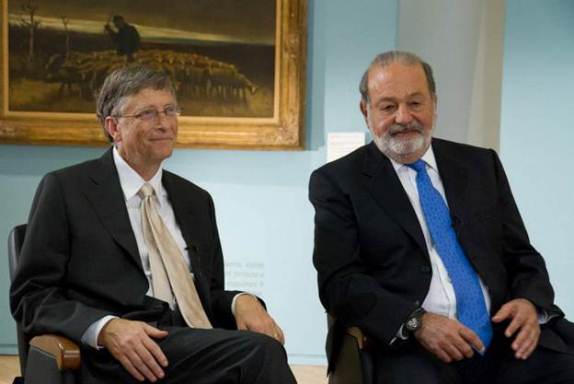At the Inter-American Development Bank’s (IDB) recent annual meeting in Panama, the two richest men in the world – Carlos Slim and Bill Gates – discussed their contributions to a little known public-private partnership that aims to improve the health status of the poorest Central Americans and Mexicans – Salud Mesoamerica 2015 or SM2015.
At the Inter-American Development Bank’s (IDB) recent annual meeting in Panama, the two richest men in the world – Carlos Slim and Bill Gates – discussed their contributions to a little known public-private partnership that aims to improve the health status of the poorest Central Americans and Mexicans – Salud Mesoamerica 2015 or SM2015.
Together with the country partners, foundations and fellow IDBers, I led the design of this initiative in 2009-10, so I‘m not at all objective. And in monetary terms, the partnership is modest in size – $150 million over five years from Slim, Gates and the Government of Spain and $150 million in counterpart from recipient governments – and executed by governments themselves with support from the IDB. But I’m excited to see SM2015 take off because the partnership is testing five innovations in health aid that – if successful – could inform its bigger brothers and sisters at the Global Fund for AIDS, TB and Malaria, the GAVI Alliance and beyond.

Bill Gates and Carlos Slim discuss their contributions to SM2015 (photo credit IDB, used with permission)
The five innovations are:
- Targeting the poorest: As in other countries experiencing rapid economic growth, inequalities in health and access to health care in Central America and Mexico are large. Children in the bottom quintile of the wealth distribution are 6 cm shorter on average than their wealthier peers, a difference that has been shown to have a lasting effect on child development and even earnings as an adult. And only half of the poorest women have access to skilled attendants at birth, compared to 100 percent of the wealthiest. SM2015 only works with the poorest populations, using a combination of geographical and individual targeting, modeled on the targeting approach used by conditional cash transfer programs.
- Cost-effective package: SM2015 will only finance reproductive, maternal, newborn and child health services determined to be highly cost-effective in that particular setting. And that’s it. In comparison, the Global Fund and PEPFAR will finance second- and third-line antiretrovirals in the poorest countries in the world, which presents a clear tradeoff, given that second line treatment can be 100 times or more as expensive as first-line regimens and many of these countries have not yet ensured full access to first-line treatment.
- Incentives for governments to take over the job: SM2015 is using grant monies to fund basic health services that should be funded by public monies. The goal is not to provide grants for service delivery, but instead to give visibility to the problem, create incentives to reprogram public resources towards these key services and populations, and get out of Dodge. To accomplish this goal, SM2015 donors put up half the necessary financing while SM2015 countries put up the other half. If results are accomplished, SM2015 donors will release a performance bonus equivalent to half of the countries’ contribution. In other words, the countries will get half their money back to continue the good work that was started if they show progress … and receive nothing if progress isn’t made.
- Money directly attached to results: Lots of donors say they do results-based aid, but in deciding whether to disburse or not they actually rely on self-reports from recipients – which can be over-reported – or take into account many other factors besides the results. SM2015’s performance bonus is only disbursed if coverage of packaged services and selected outcomes increase significantly in the targeted communities and populations. Performance is measured at baseline and ~18-months using a reasonably-priced, locally-procured independent household survey fielded in a representative sample of beneficiary and non-beneficiary communities.
- Evaluating impact: Even if interventions are cost-effective, that doesn’t mean that they are delivered cost-effectively. SM2015 innovates by evaluating different delivery platforms on both the provider and household side, using experimental or quasi-experimental designs, to inform best strategies to continue scale-up. The website should have more information on these evaluations soon, and I hope they’ll post all the data and crowd-source the analysis.
On their own, none of these ideas is new. But together, we program designers are betting that demonstrating reasonable-cost health aid models that more rigorously reward performance and sustainability will make a big difference for the poorest populations in Central America and Mexico, and perhaps beyond. Stay tuned…
SM2015 participants with Carmen Barroso of IPPF, Roberto Tapia of Carlos Slim Health Institute, Gary Darmstadt of the Bill & Melinda Gates Foundation, Santiago Levy of the Inter-American Development Bank (photo by IDB, with permission)